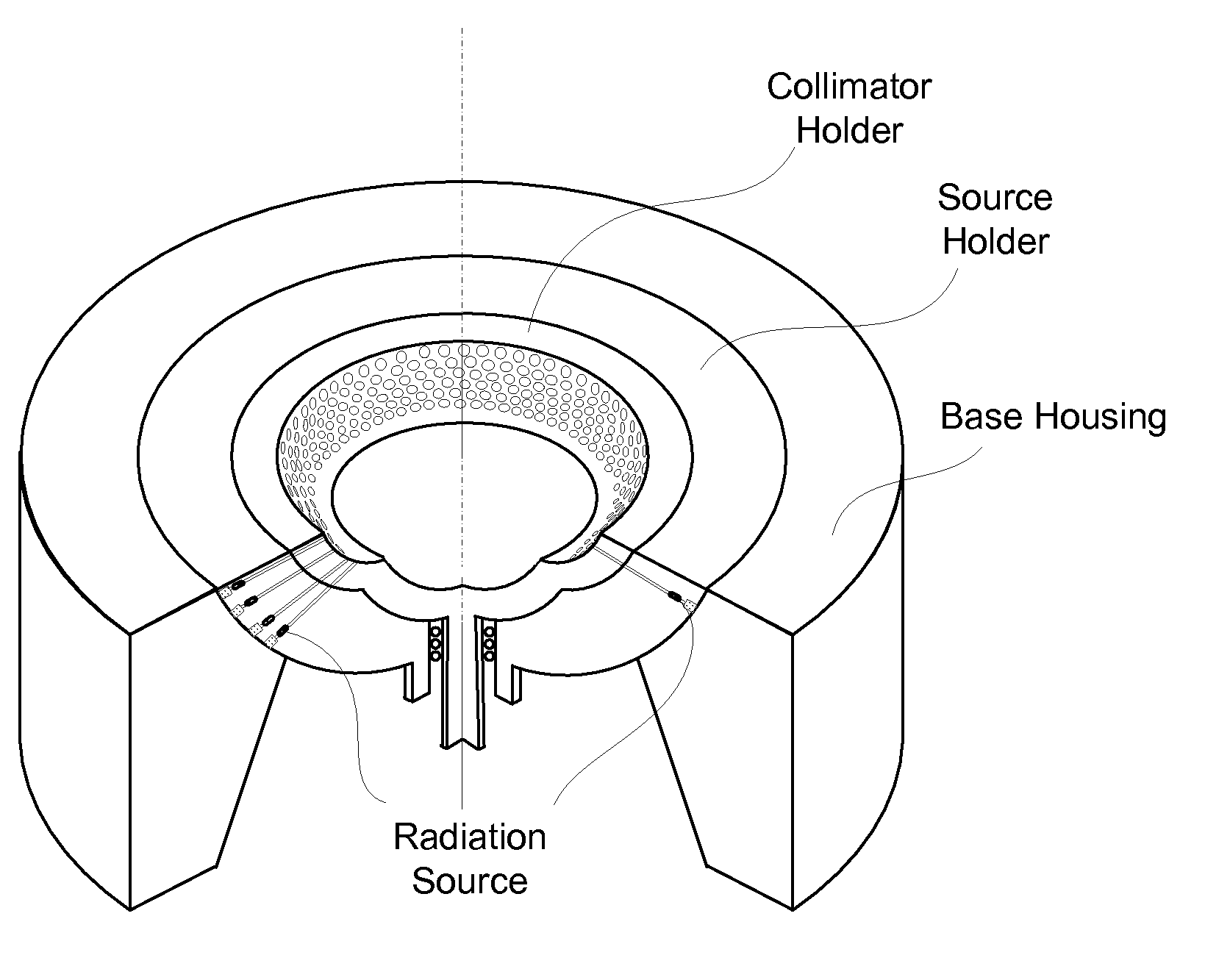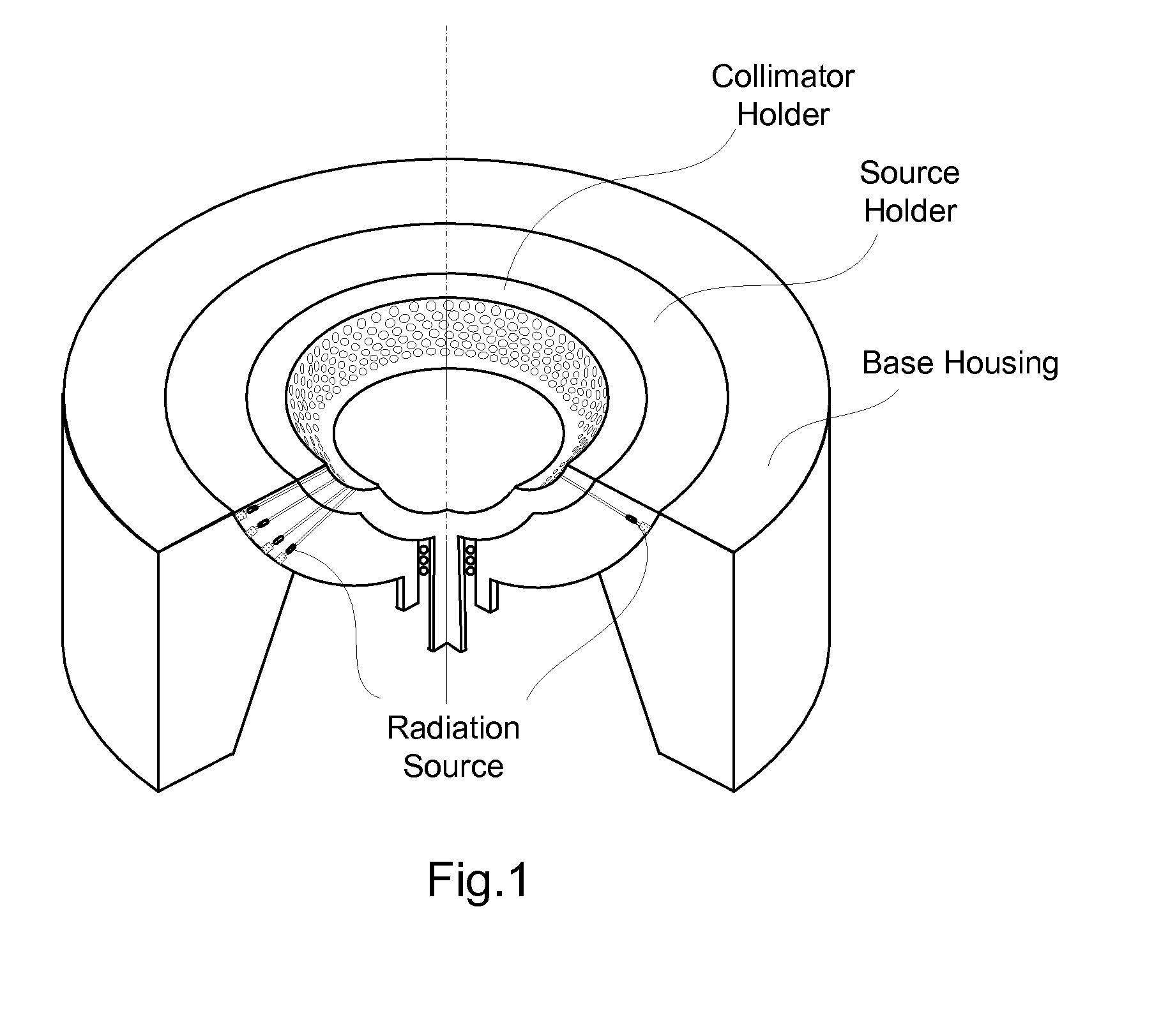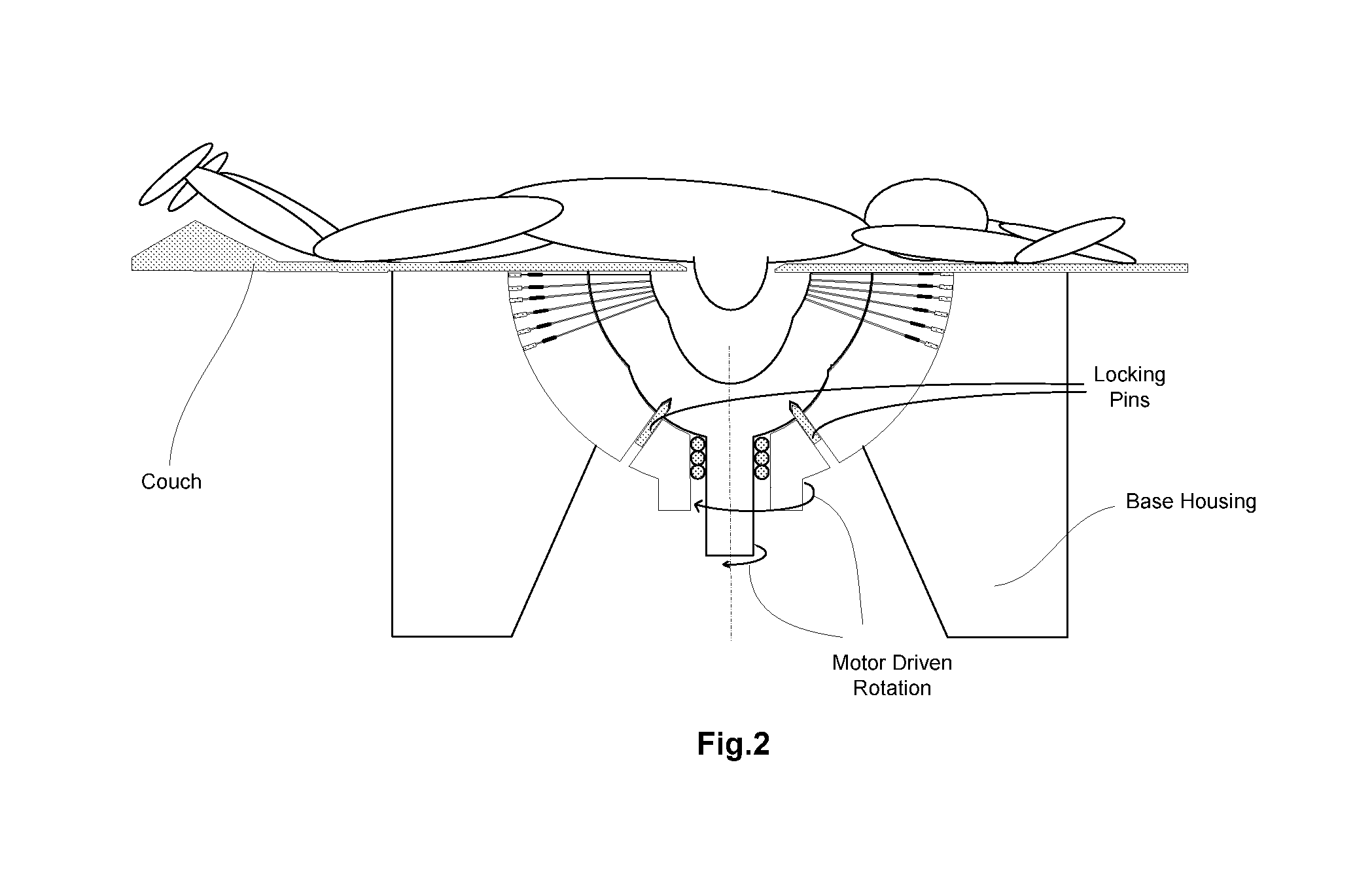Method and equipment for image-guided stereotactic radiosurgery of breast cancer
a stereotactic radiosurgery and stereotactic technology, applied in the field of magnetic resonance imaging (mri), stereotactic radiosurgery, breast cancer, can solve the problems of no better than a centimeter of surgery, adversely affecting the quality of life of patients undergoing bct, and complex bct, etc., to achieve the effect of monitoring the safety and operation
- Summary
- Abstract
- Description
- Claims
- Application Information
AI Technical Summary
Benefits of technology
Problems solved by technology
Method used
Image
Examples
Embodiment Construction
[0019]The present invention provides a method of using stereotactic radiosurgery to treat a cancerous region of a breast. The present invention also provides equipment for use in the method. The method and equipment of the present invention are believed to offer potential advantages over current methods of treatment, including BCT. The potential advantages include, but are not limited to, non-invasive nature, no pain, potential for elimination of radiation treatment for most, if not all, early-stage breast cancers, enhanced quality of life (by shortening the treatment time from 7-10 weeks to hours), absence of scars, reduced radiation to non-cancerous tissue, ease of repetition, and cost-effectiveness, due to the elimination of invasive surgery and subsequent radiation therapy.
[0020]Due to stereotactic localization, it is believed that an accuracy of about 1 mm can be achieved. With breast cancer radiosurgery, a substantial radiation dose is inevitably delivered to the outside of th...
PUM
 Login to View More
Login to View More Abstract
Description
Claims
Application Information
 Login to View More
Login to View More - R&D
- Intellectual Property
- Life Sciences
- Materials
- Tech Scout
- Unparalleled Data Quality
- Higher Quality Content
- 60% Fewer Hallucinations
Browse by: Latest US Patents, China's latest patents, Technical Efficacy Thesaurus, Application Domain, Technology Topic, Popular Technical Reports.
© 2025 PatSnap. All rights reserved.Legal|Privacy policy|Modern Slavery Act Transparency Statement|Sitemap|About US| Contact US: help@patsnap.com



